Creative Assembly is finally about to release Total War: Warhammer III, concluding a trilogy that provided dedicated fans with nearly six years of non-stop entertainment, with support and new releases for the first two games continuing almost uninterrupted.
Similar to its nearest predecessor, Total War: Warhammer III’s main campaign is centered around a specific narrative scenario that requires the players to focus on precise victory conditions.
I actually won’t spoil the story, because that would reduce your enjoyment of the prologue, which is actually a mini-campaign in its own right that will likely last you a full evening. It has its story and characters, and it’s likely one of the most extensive and enjoyable “tutorials” I’ve played in a while. Don’t make the mistake of skipping it.
The focused nature of the main campaign should not trick you into believing that it is short. It really isn’t. While I did not rush it, it took me exactly 200 turns to complete it, which translates into roughly a week playing every night. It can be done quicker, but not by much.
If you’d rather have a less focused approach, you can aim for a domination victory, but this feels more like an afterthought, and I wouldn’t advise it unless you want to challenge yourself and don’t really care for the story. Its conditions are really quite hefty.
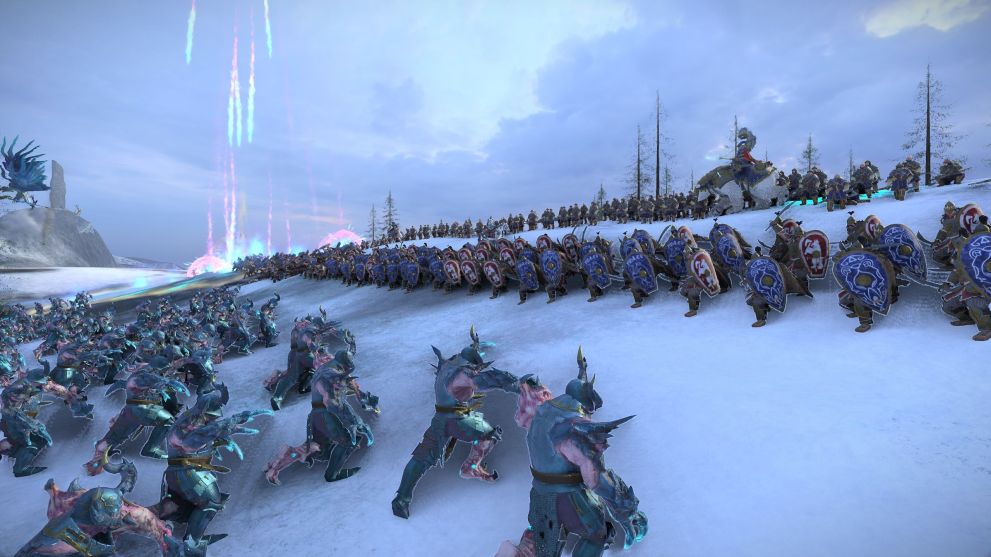
The story itself is interesting and original, fitting very well in the Warhammer Universe as the Vortex campaign did in the second game of the series. It also works as an excellent introduction for the factions included in the game, Kislev, Grand Cathay, the five flavors of Chaos (Khorne, Nurgle, Slaanesh, Tzeentch, and the undivided Daemons of Chaos), and the Ogre Kingdoms.
Perhaps there is room to say that the playable roster is a bit unbalanced, with five chaos factions, two human factions, and the Ogres working as a wildcard (while crude and monstrous, Warhammer’s ogres tend to be on the neutral side of things).
That being said, this is the nature of the beast. After two games, we’ve pretty much run out of “good” (the quotation marks are always mandatory in Warhammer) factions, and Creative Assembly actually had to go scrape the bottom of the archives to find something to work with. And that’s actually fantastic.
Kislev and Grand Kathay have always existed within the Warhammer lore, all the way back to the times of the first edition of the tabletop wargame and Warhammer Fantasy Roleplay. Still, they have not really been fleshed out as they deserved. Creative Assembly woke up the slumbering Games Workshop and convinced them to pretty much come up with all the lore and flavor required for a playable faction, enriching the world in the process.
Considering Games Workshop has been way too busy trying (and in my case, definitely failing) to sell us that disaster called Age of Sigmar, this is the first time in several years in which the many who love the old Warhammer World get something truly new. This is a good signal for the future, on top of providing Total War: Warhammer III with a unique value among the many fans of the IP.
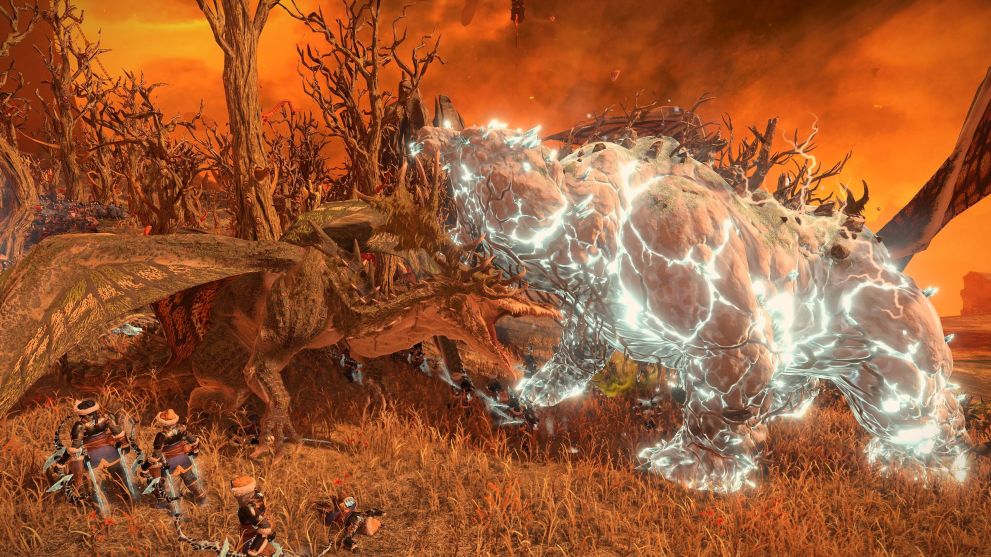
The new factions are very well fleshed out, with specific mechanics that give them strongly individual flavors and mechanics. You’ll basically play different games every time you pick a new one. That’s a big boon for replayability and solidifies the departure from most older Total War games, in which factions are very much homogenous in the way they play.
On the other hand, the attention on the new factions brought what appears to be a rather simplified approach to the campaign. Older (but very relevant) factions like the Empire, the Dwarfs, the Greenskins, the Skaven, the Wood Elves, the Vampire Counts, and Norsca are present in the game, but they feel like less meaningful decoration.
They will not try to “win” the campaign, so much that they’re not even portrayed in its interface. As a matter of fact, their campaign AI appears to be limited, so I haven’t seen any of them attempting to confederate in their macrofactions and build a real power base, curbing their impact considerably.
A clear example from my experience with the game is the Empire. I never saw Karl Franz actually trying to form it, sticking to his initial Reikland faction and actually requiring me (as both Kislev and Grand Kathay) to travel all the way south/west to save him in the nick of time from obliteration at the grubby hands of marauding and much more aggressive Ogres. This paints a picture of the Old World that likely won’t feel as natural as it could to veteran Warhammer fans.
Another limitation of the campaign AI (which always feels a bit weak in Total War games, and I’m not talking about the level of difficulty, but its ability to cope with issues beyond simply being buffed artificially) is how it handles the main mechanics of the campaign itself.
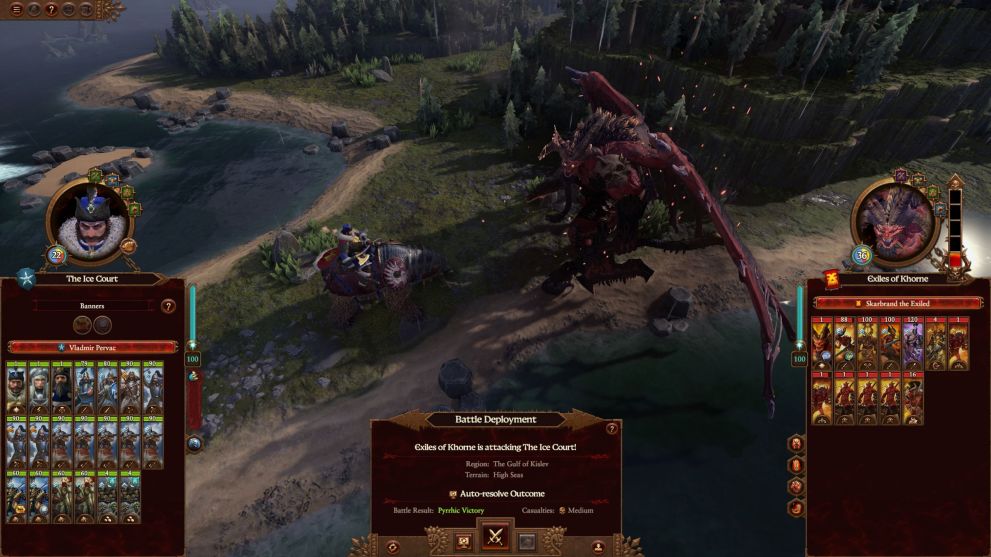
Periodically, the game will open a series of Chaos portals all over the map. They will start spawning enemy agents, and after a few turns, they will spew out entire stack-sized armies, on top of creating inordinate amounts of chaos corruption in the whole region.
The AI is really inept in dealing with them, which is weird since they can be very easily closed with an army that will have to fight an easy battle or an agent that just has to pay a relatively small sum of gold, much before they become an actual liability.
While AI factions will close a few, they will blatantly ignore most. The result is that their territories will be completely devastated by corruption (which causes massive public order and growth issues) and by the marauding chaos armies that will pop out because no one closed the portals.
They also seem to be completely unable to cleanse that corruption once it has set. So either the player decides to play “global policeman,” neglecting strategic goals to go put out fires all over the map and saving its allies from issues that have elementary solutions but get consistently ignored, or you can expect the world around you to become a real mess really fast, causing you to lose precious trading partners and weakening your own economy in turn.
It doesn’t feel very engaging, as having to consistently protect everyone else ends up being a chore. I really hope to see Creative Assembly improve its campaign AI considerably going forward, but this is something I say with every Total War game. We shouldn’t need to boost the difficulty to insane levels for the AI to become barely competent (just because it’s artificially buffed), and when you implement a campaign mechanic into your game, you should at least make sure that your AI can deal with it.
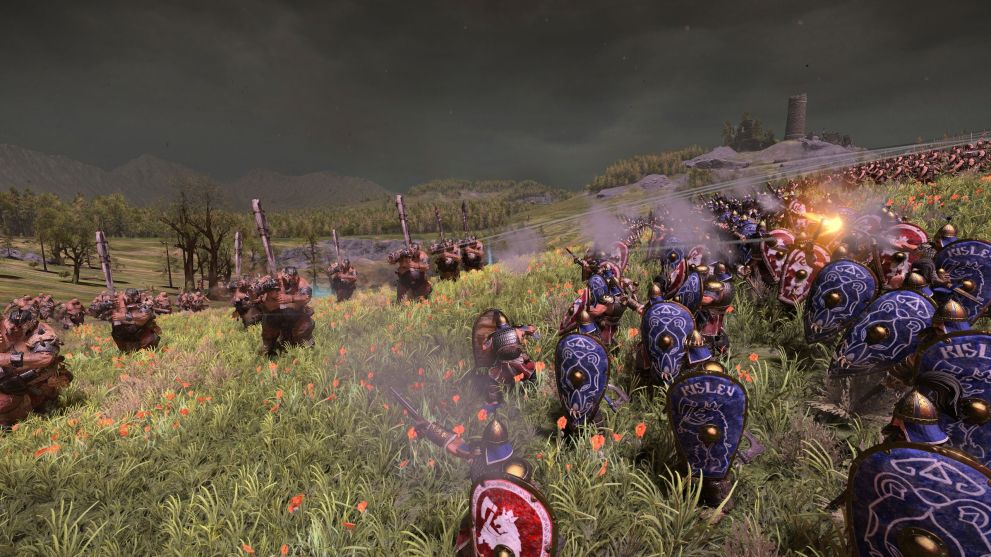
Luckily, Total War: Warhammer III brings to the table a richer suite of diplomatic options compared to its predecessors. You can now trade regions, so you can at least help out your incompetent allies more easily and nurse them back to health when they inevitably lose their territory.
You can also threaten the AI to accede to your demands, but this option is only valid if you’re willing to risk war and to see your reliability tanking, limiting your diplomatic game to bullying, which doesn’t seem to lead to great results.
On the other hand, the new “quick deal” feature is an awesome quality-of-life addition, basically bringing up which factions are most likely to accept each type of available deal. Combined with the “Balance Offer” button that automatically selects how much you have to pay to seal said deals, or how much gold you can squeeze out of other factions, it makes the diplomatic game a lot less cumbersome.
That being said, there’s still a lot more room for additional depth, which would be welcome. I understand that the game is called “Total War,” but diplomacy is important in any strategy game. The ability to trade magic items, turn defeated enemies into vassals, bring back dead factions once you liberate them, or brokering peace among other factions currently at war would make things even more interesting. That being said, the franchise is making baby steps to bring the diplomatic game back up to speed after massively oversimplifying it several years ago, so that’s something I certainly appreciate. I’d like to see more, hopefully before the end of Warhammer III’s support cycle.
It’s worth mentioning that my pointed and extensive criticism of the recurring problems of the Total War franchise in the fields of campaign AI and diplomacy basically amounts to “tough love.” The points I mentioned above don’t make the game “bad” in any shape or form, but seeing them addressed would further improve what already is a great game.
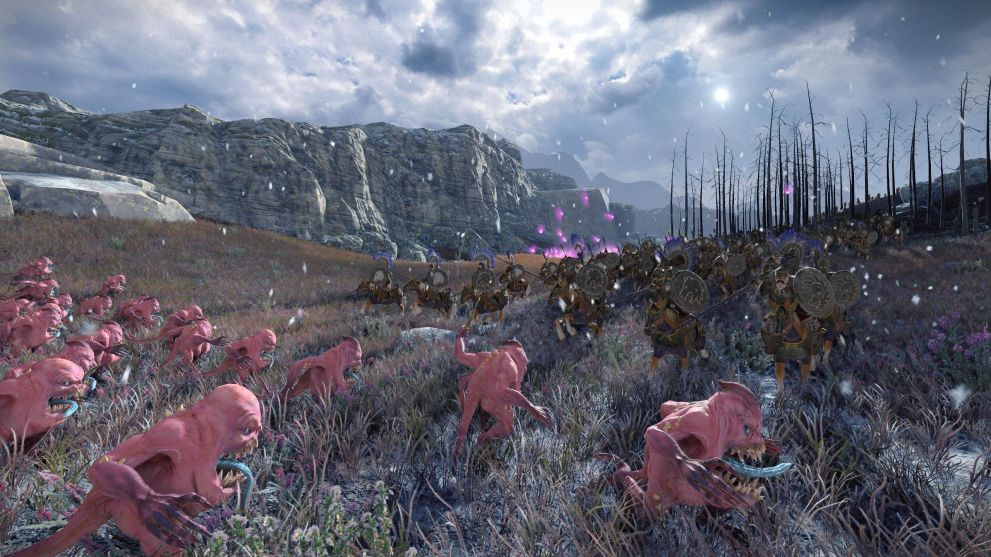
Speaking of AI, I feel that the battle AI has improved at least a bit compared to Total War: Warhammer II. I’ve had a higher percentage of challenging brawls that required careful maneuvering to win, and simply creating a motionless firing line doesn’t win battles as easily anymore.
Enemies will try to pressure your flanks and gradually force your formation to collapse. They will also try to snipe your officers when they can, and while those moves aren’t that hard to counter, they’re certainly a good step in the right direction.
Field battles are as spectacular as ever, with hundreds of troops displayed across the battlefield. Like its predecessors, Total War: Warhammer looks really sweet in nearly every aspect of its presentation.
This also extends to the campaign map, which is more beautiful and vibrant. At first, I actually did not notice this, but if you’re able, I suggest you fire up Total War: Warhammer II. You’ll see the difference immediately. Total War: Warhammer III is an absolutely beautiful game, and Creative Assembly’s art department has made great steps since the first game of the trilogy.
I love the marked and annotated points of interest on the map, which provide flavor by giving you more information about the world.
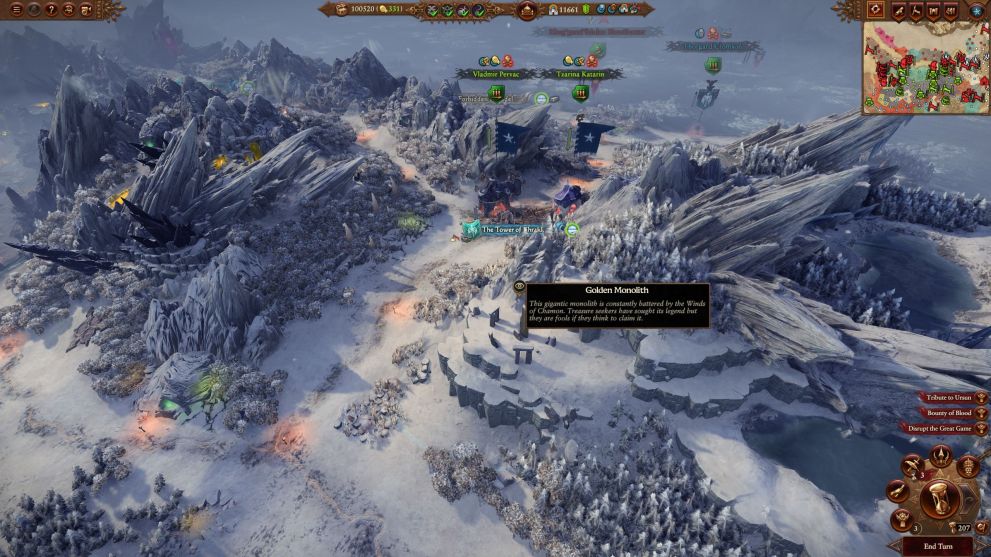
A significant improvement that certainly reflects on gameplay is the design of settlement battle maps, which is now a lot more complex and exciting, making sieges much more fun and engaging.
This combines with the massive improvement brought by the supply system, which gives you a budget to work with to build obstacles and turrets. It’s an additional and welcome layer of tactics that balances sieges much better. Gone are the times of seeing your troops die by the droves under the crosshairs of automatically activated towers that felt way overpowered and outraged almost everything. Now the defender actually has to spend supplies to activate defensive towers, and they feel a lot more reasonable.
This doesn’t mean that defending has been nerfed. The supply system can be used very effectively, but it feels like it’s less of a given advantage and more like something that needs to be applied deliberately and smartly to really work well, which is excellent.
Another interesting little (or perhaps big?) addition is the implementation of a system to save your generals and agents so that you can recruit them in subsequent campaigns. It’s definitely not cheap to bring back a fully-leveled character, but it’s great to have the possibility, especially if you’re the kind of person who feels an attachment to their characters.
That being said, Total War: Warhammer fans already know that the true treat won’t come at launch. As it happened with the second game of the series, the third will also bring back its version of “Mortal Empires,” which basically combines the three titles into a massive macro game with all the factions and an enormous map to play with in true sandbox fashion.
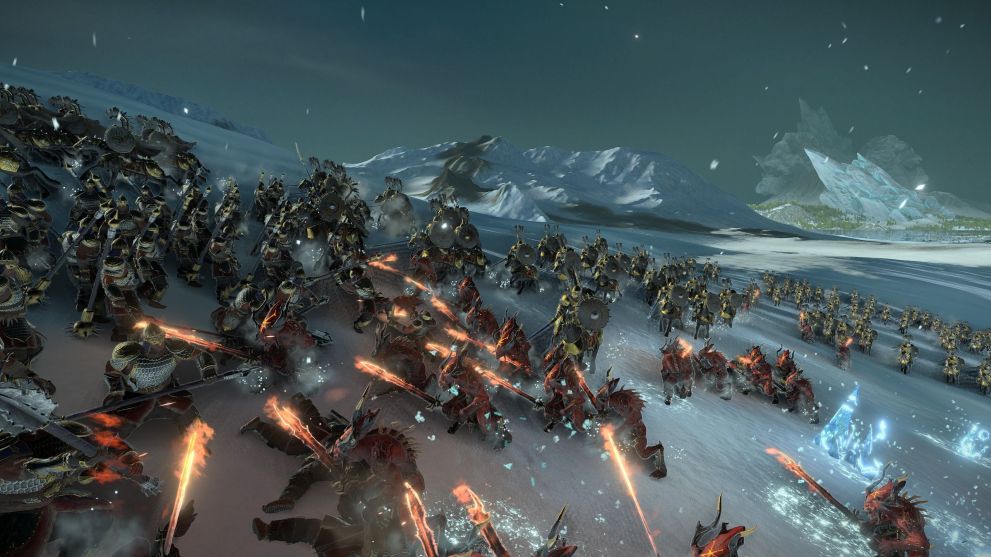
While it won’t be counted in this review, because I couldn’t play it (we don’t even know a release date yet, but it shouldn’t be too long), if the version that was included in Total War: Warhammer II is an indication, you can pretty much expect that it will add the fifth star to the score that you can see below.
It’s basically the wet dream of every Warhammer fan and the culmination of an adventure that lasted six years. It has the potential to fully bring back to life the world that Games Workshop has criminally abandoned and to do so in its complete and shining glory, with additional elements, factions, and flavor on top.
Yet, this is not to say that Total War: Warhammer III feels incomplete in its current form. While the map doesn’t represent the whole world, it’s already massive and explores new places that we haven’t seen before, and while the campaign won’t likely keep me away from the new Mortal Empires when it launches (my Bretonnian heart won’t be denied!), it provides an engaging and lore-rich experience, with great storytelling and a lot of value.
This is further enhanced by plenty of additional options, including three campaigns designed specifically for multiplayer, which are more contained experiences that can be completed in a shorter time. Personally, I never once managed to complete a co-op campaign in a Total War game. They simply take too long, and my counterparts tend to disappear after a while, so this is a very welcome addition.
Add to that a solid suite of options for single-player and multiplayer battles, and we have a really rich package that will keep players busy for several weeks or even months in its launch form, and will only be enriched when the new version of Mortal Empires and more content starts to roll out.
While Total War: Warhammer III doesn’t completely drop some of the recurring issues that the Total War franchise has suffered from for a long time, it takes significant steps in the right direction.
Ultimately, it’s a great game that will almost inevitably become even better with time, but the launch package won’t disappoint fans of either franchise involved. Especially Warhammer Fans are in for a treat, with new lore and new heroes providing a ray of hope for a better future after quite a few bleak years.
- Solid and engaging campaign.
- Spectacular and massive battles typical of the Total War series.
- Good multiplayer options.
- It's a beautiful, vibrant game.
- The new factions are awesome and very diverse.
- Adds to the Warhammer lore elements that were sorely needed.
- Great longevity and replayability which will be further enhanced after launch.
- New and mostly useful diplomatic options.
- The campaign AI is still inept, often unable to deal effectively with basic campaign mechanics.
- The older factions are little more than decoration, and they shouldn't be.
- Despite the new options, diplomacy feels still limited.

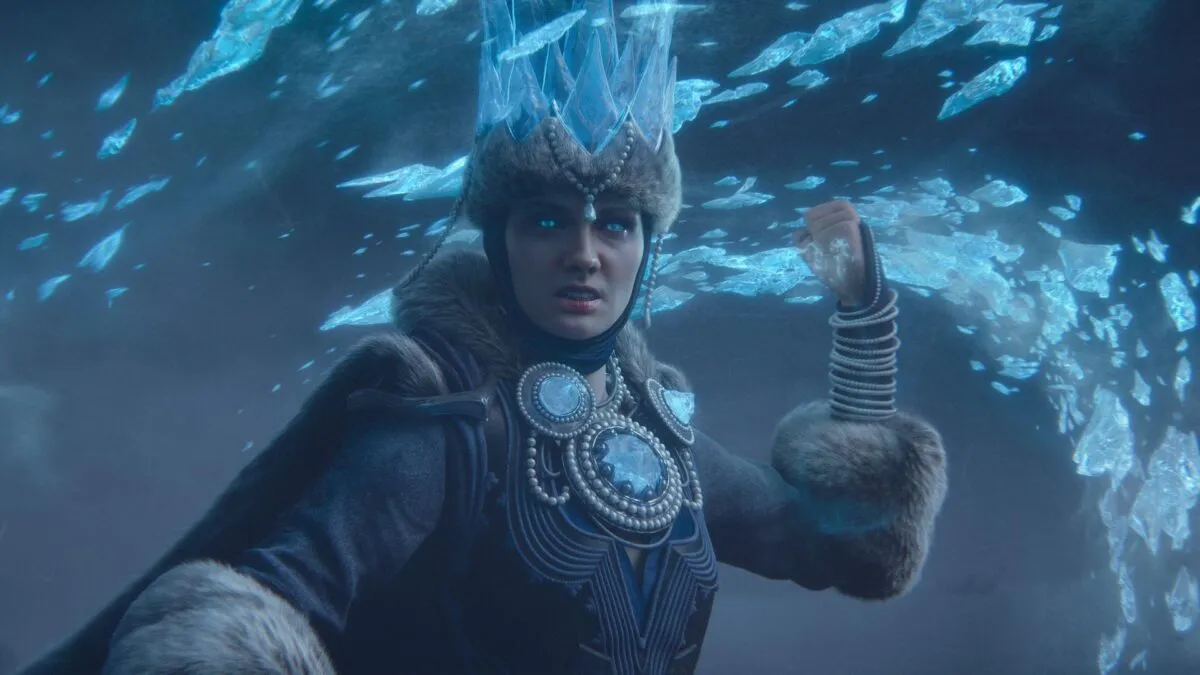










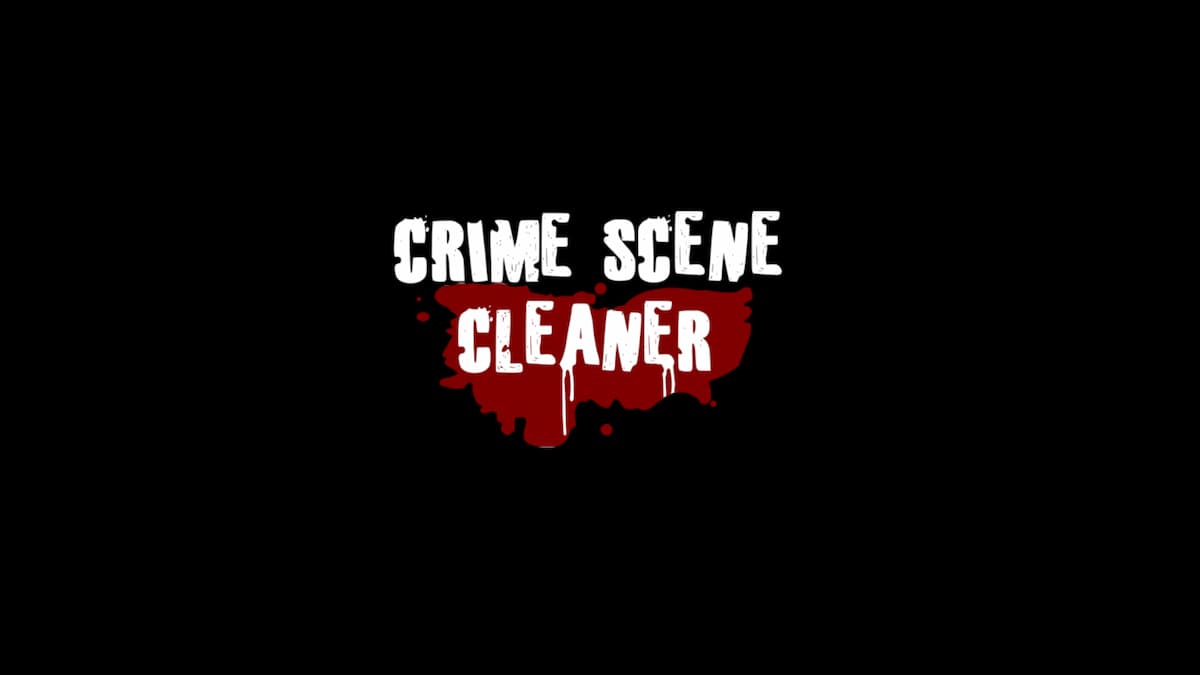
Updated: Feb 14, 2022 10:31 am